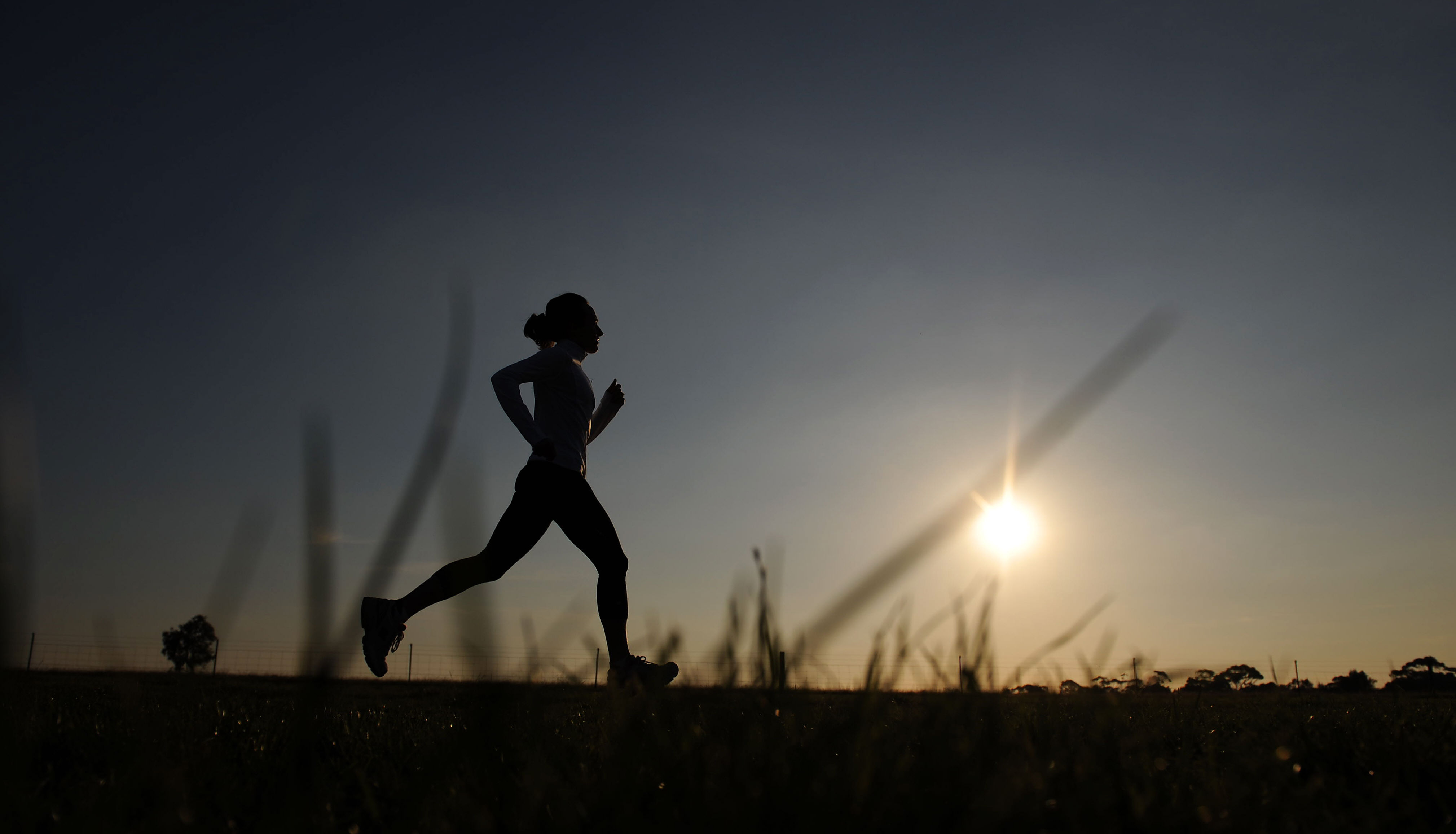
It can feel like a struggle to get outdoors now that the days are shorter and the weather is colder, but it's actually more important than ever to get outside right now.
The winter solstice may not offer much daylight, but it's a fantastic opportunity to spend time in nature. The longest night followed by the promise of longer days ahead has inspired festivals and ceremonies around the globe for centuries and is a natural event that anyone can take part in celebrating, regardless of their beliefs.
Though it can feel tempting to stay indoors under a cozy blanket, spending time outside during the winter solstice is a great way to keep your immune system strong and to feel connected to the transition from autumn into winter. This guide to how to celebrate the winter solstice outdoors explains the significance of the day, plus some of my favorite ways to celebrate it in nature.

What is the winter solstice?
The winter solstice marks the moment when either of the earth’s poles reaches its maximum tilt away from the sun. In the northern hemisphere, the winter solstice occurs in December while for those of you in the southern hemisphere, it takes place in June. At this moment, we experience the longest night and shortest day of the year, while the sun will remain at its lowest level in the sky throughout the day.
According to the Gregorian calendar, the winter solstice marks the official first day of winter, even though for many of us, it may have felt like winter for weeks or even months by the time the solstice arrives. The winter solstice usually falls on the 21st or 22nd of December in the northern hemisphere, and though we think of it as a day, it is really just a moment in time. In 2024, the winter solstice occurs on Saturday, December 21 at 1:21 a.m. pacific time, 4:21 a.m. eastern time and at 3:27 a.m. on 9:21 a.m. in the UK.
The summer solstice occurs six months after the winter solstice, when either of the earth’s poles is closest to the sun, and on that day we experience the longest day and the shortest night. The midway point between the two solstices is called an “equinox,” and these occur in spring and fall.
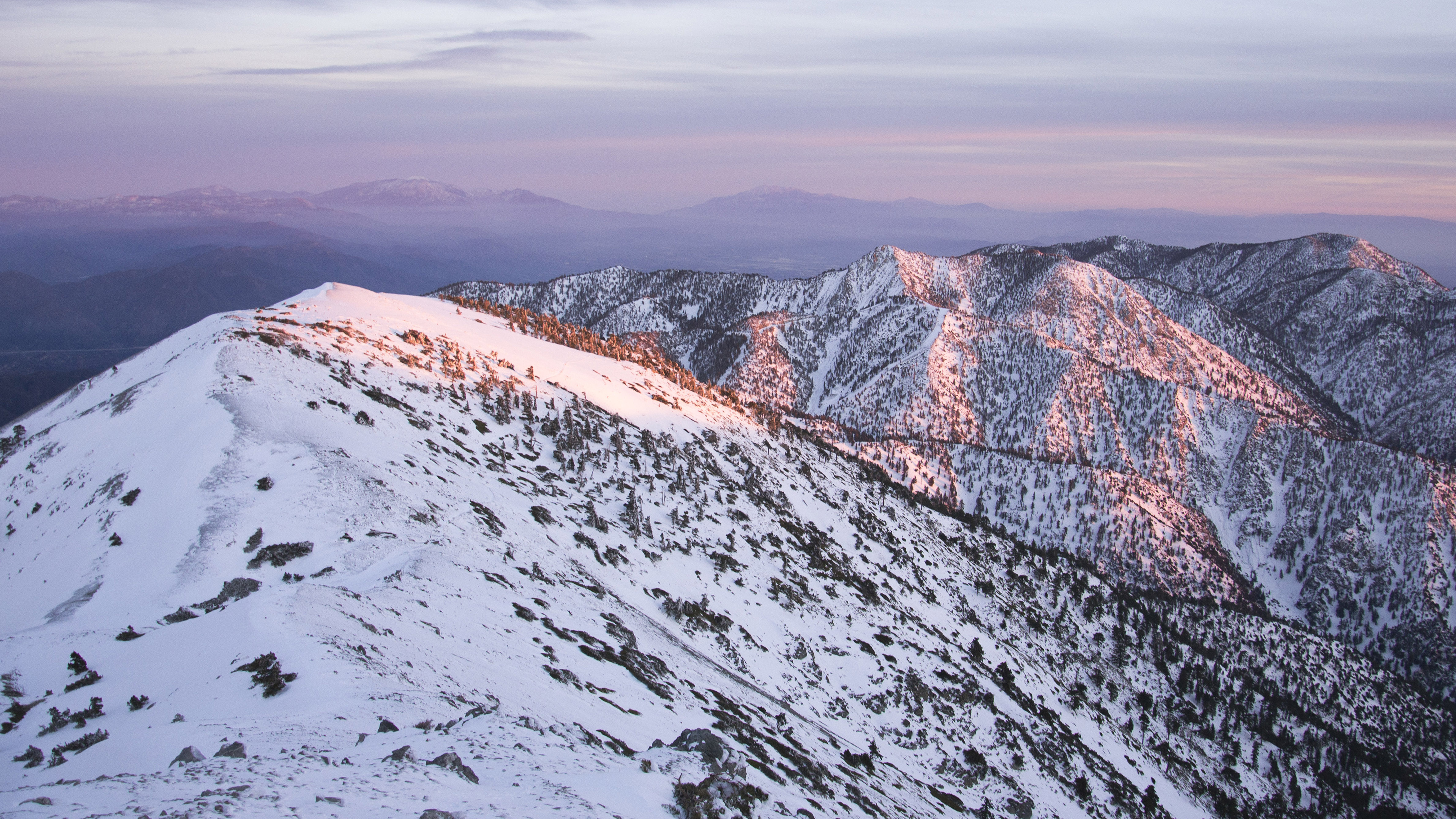
How do people celebrate the winter solstice?
Winter solstice celebrations and traditions are commonly thought of as pagan, though these festivities have certainly influenced other holidays that fall around this time, such as Hanukkah and Christmas. Traditionally, the winter solstice has been viewed as an auspicious moment in the cycle of the year, when there is perceived to be a “return of the light” and with it, the promise of more energy, optimism and a journey towards the next growing season. Many traditions involve setting intentions and releasing patterns that are no longer useful or beneficial.
Though westerners are used to celebrating January 1 as a time to mark new beginnings, in the natural cycle of the year, the solstice signals the true beginning and many festivals that honor it revolve around light, fire and nourishing food. Many festivals exist such as St Lucia’s Day, a festival of lights in Scandinavia, Dong Zhi, a Chinese festival marked by eating harvest foods to fortify for winter, and an all-night fire and dancing ceremony called Soyal ritualized by the Hopi tribe of Arizona
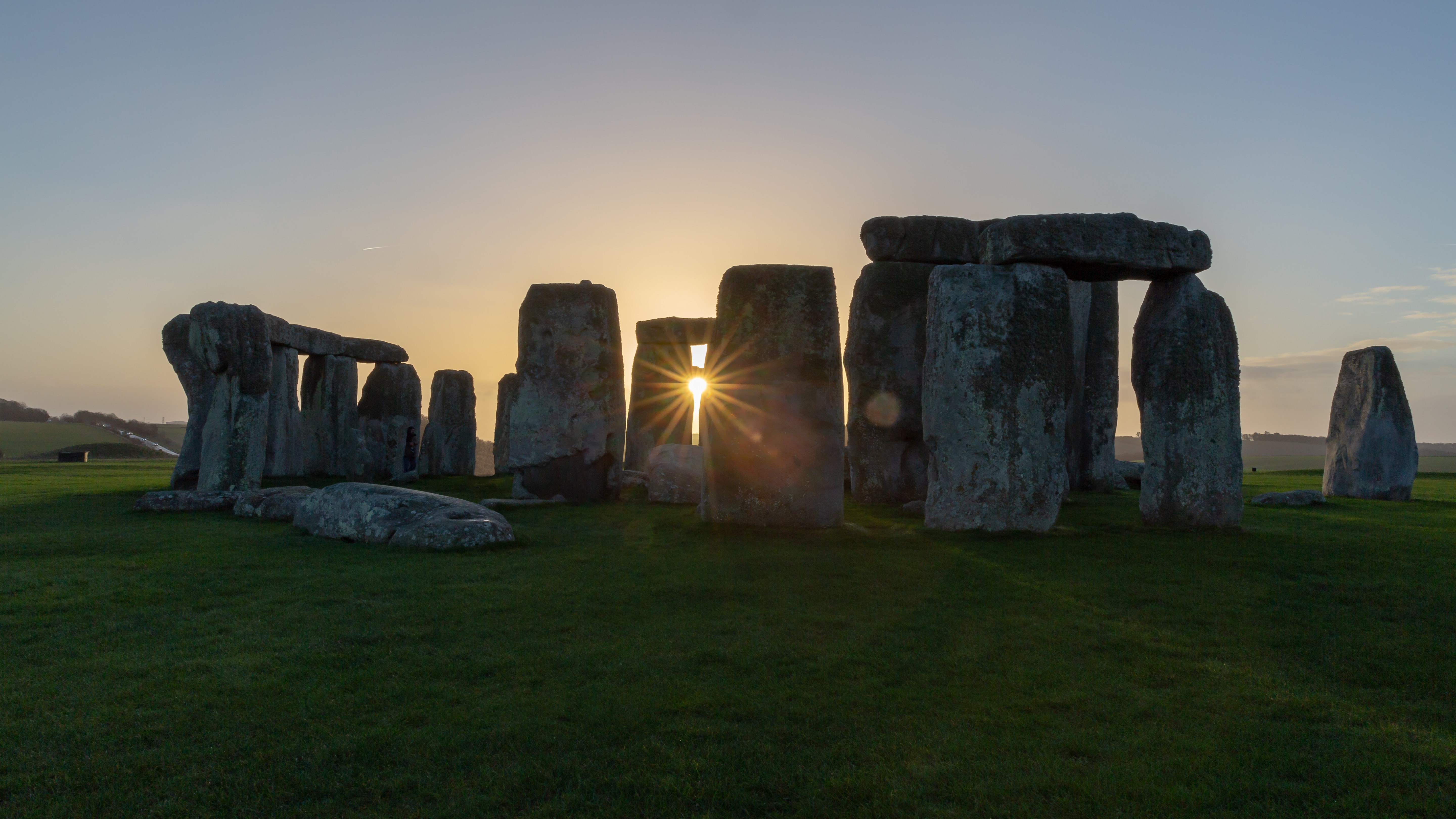
How to celebrate the winter solstice outdoors
Because the winter solstice is a natural event, spending time outdoors with the low winter sun doing virtually anything that’s respectful of nature is an apt way to celebrate. Plus, as a hiker or trail runner, you might be keen to see the days getting longer again so you can spend more time in nature and want to celebrate. If there are no festivals where you live, or you’d simply like to marry your winter solstice with your love of the outdoors, here are a few ideas:
1. Hit the trail
It’s simple, but going for a hike is a great way to celebrate the solstice by tuning in to the patterns of the sun. A trail run works too, but with the days being so short you might find that it’s harder to wake up and your energy is naturally lower, so why not slow things down? Grab your best hiking boots, snowshoes or cross country skis and make sure you plan on a shorter hike so that you don’t run out of daylight, and bring a headlamp for backup (see our guide to the best headlamps for some good options). Walk slowly, keeping your attention on your surroundings, and pay attention to the way the natural world is responding to the shortest day of the year.
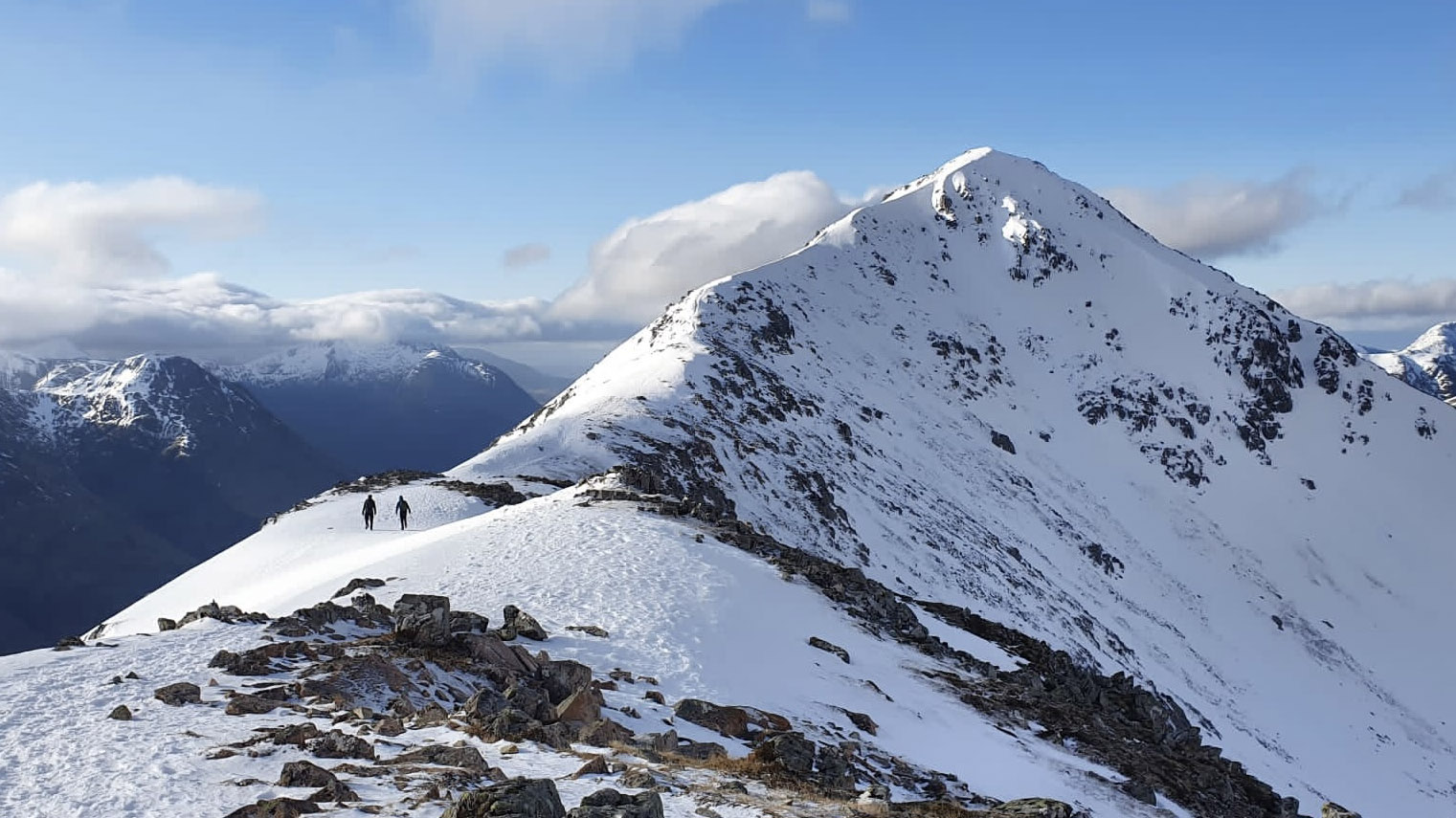
2. Visit the forest
Pine is a pagan winter solstice symbol representing healing, and for this reason (whether you know it or not), you might already have a pine wreath on your door or a Christmas tree in your home at this time of year.
If you live near an evergreen forest, take a stroll between the trees and squeeze the pine needles between your fingers to savor the scent or try some forest bathing to soak up the properties of the pine trees. Barefoot shoes like the Vivobarefoot Tracker Textile AT are perfect for this terrain and can help you feel more connected to the earth.
A large body of research now shows that spending time among trees and in green spaces has many health benefits such as lowering stress and reducing your risk of chronic disease.
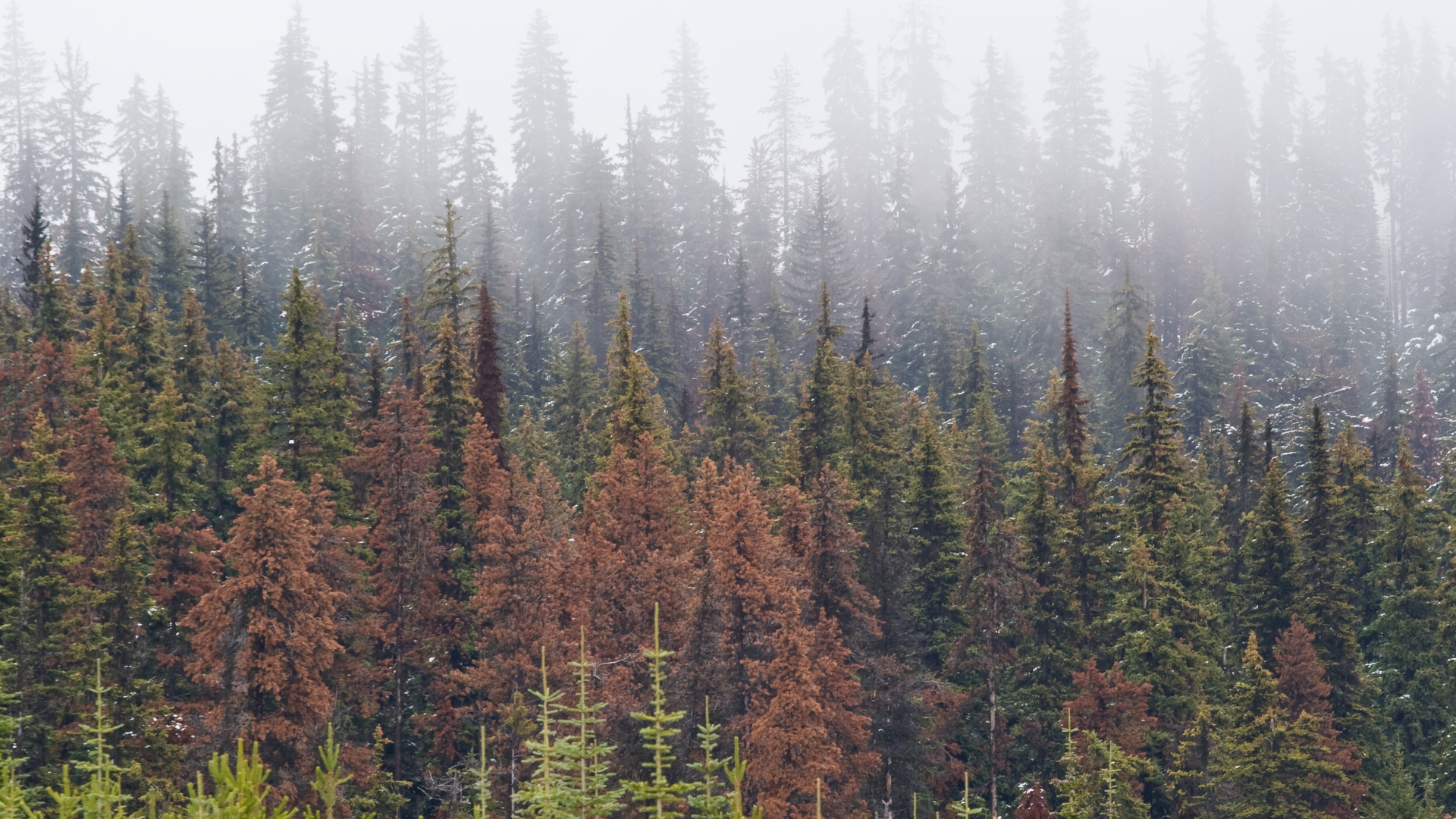
3. Unroll your yoga mat
The sun is an important symbol in yoga, representing the energy of action where the moon represents rest. Many yoga traditions begin with an east-facing practice to bestow the benefits of the sunrise on the practitioner, or with a series of warming movements called “sun salutations.”
Though your local yoga studio might be offering a special class, if you’re lucky enough to live somewhere with milder weather, or your ski clothes are stretchy, you can take your yoga practice outside and enjoy your sun salutations facing the sunrise, or even just practice our yoga for hiking sequence back at the trailhead to stretch it out.
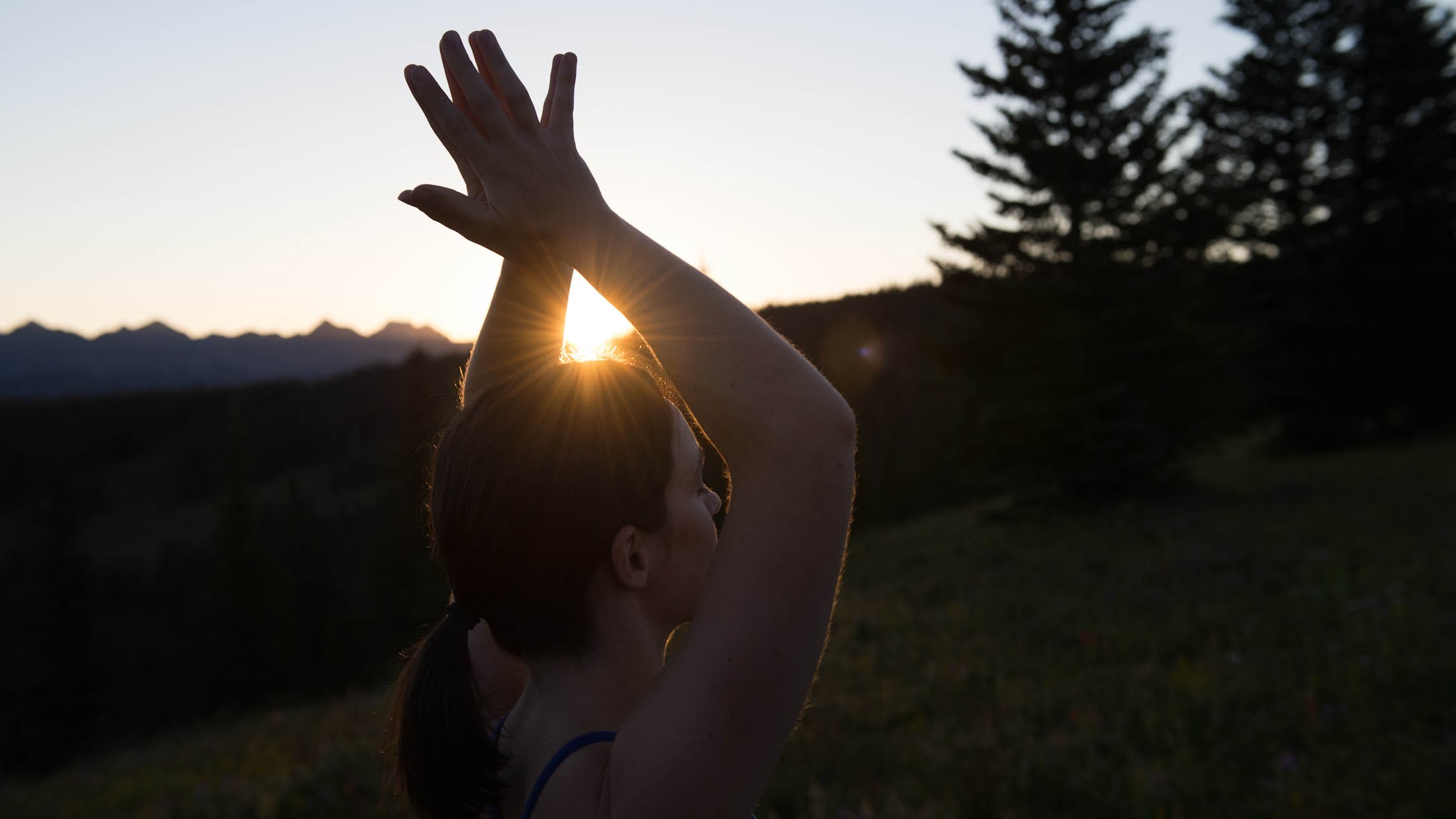
4. Meditate outdoors
Because winter solstice traditions are often centered around setting intentions for the growing season ahead, you might find it to be a powerful time to enjoy meditation outdoors. If it’s cold, wrap up warm with a base layer, thermal underwear and a good down jacket and don’t sit for too long.
The benefits of meditating outdoors include exposure to immune-boosting antigens and better air quality as compared to indoor environments, as well as subtler benefits, such as a natural environment providing “fascinating objects” to focus your mind on.
Need a little help? The Garmin Venu 3 and Vivoactive 5 watches now come with meditation mode.
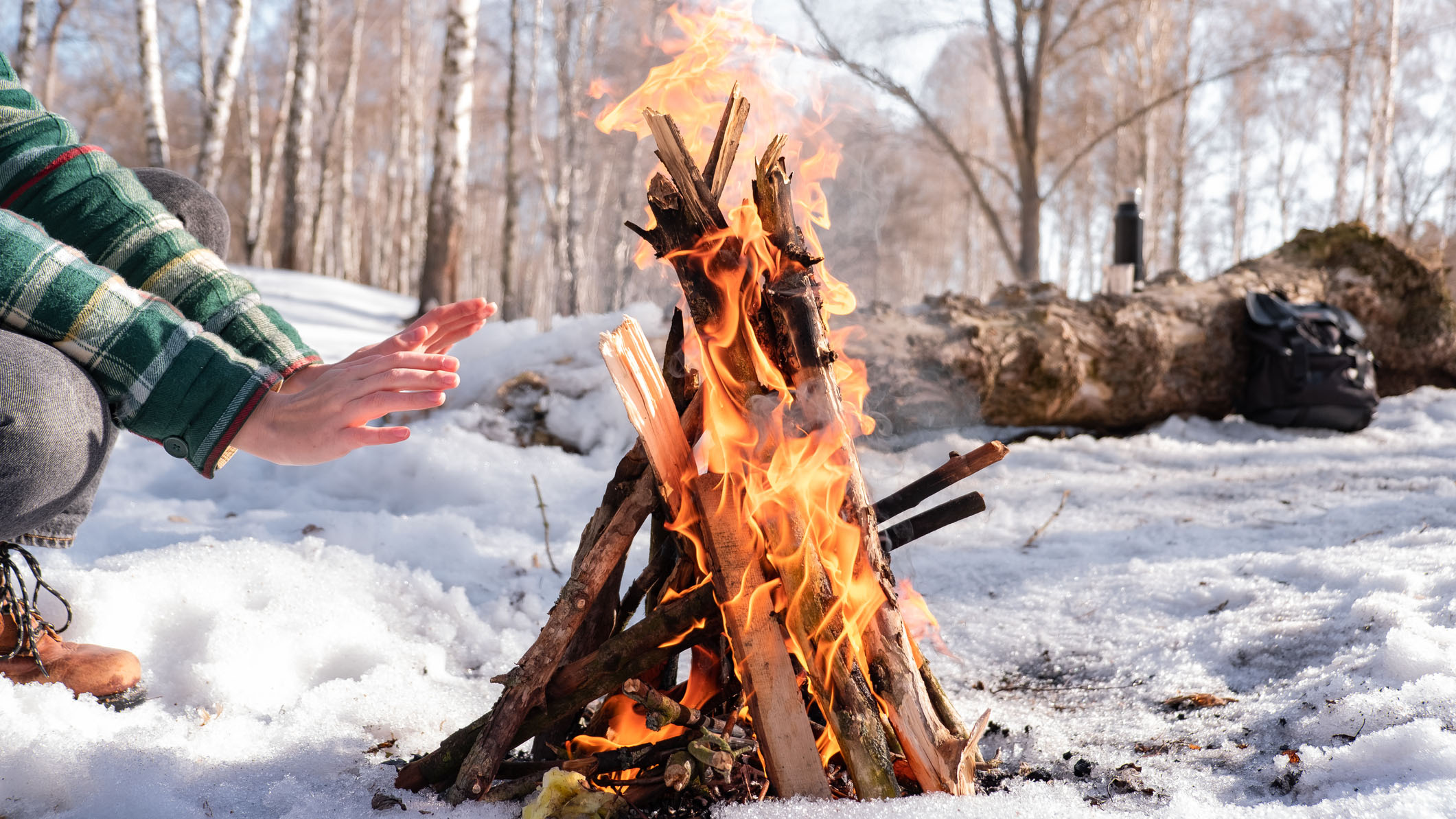
5. Build a fire
Fire ceremonies abound on the winter solstice and, so long as you’re somewhere that isn’t under a fire ban and it's safe to do so, building a campfire with friends is a perfect way to keep the light alive and stay warm on the longest night.
You can share stories, dance and play music, or have a fire ceremony where you write down any behaviors you’d like to dissolve onto pieces of paper and throw them into the fire, imagining their ashes fertilizing the soil for your new intentions.
If it's not safe to have an open fire where you are, a great soluting is a wood-burning stove which brings all the cozy warmth without safety risks.







